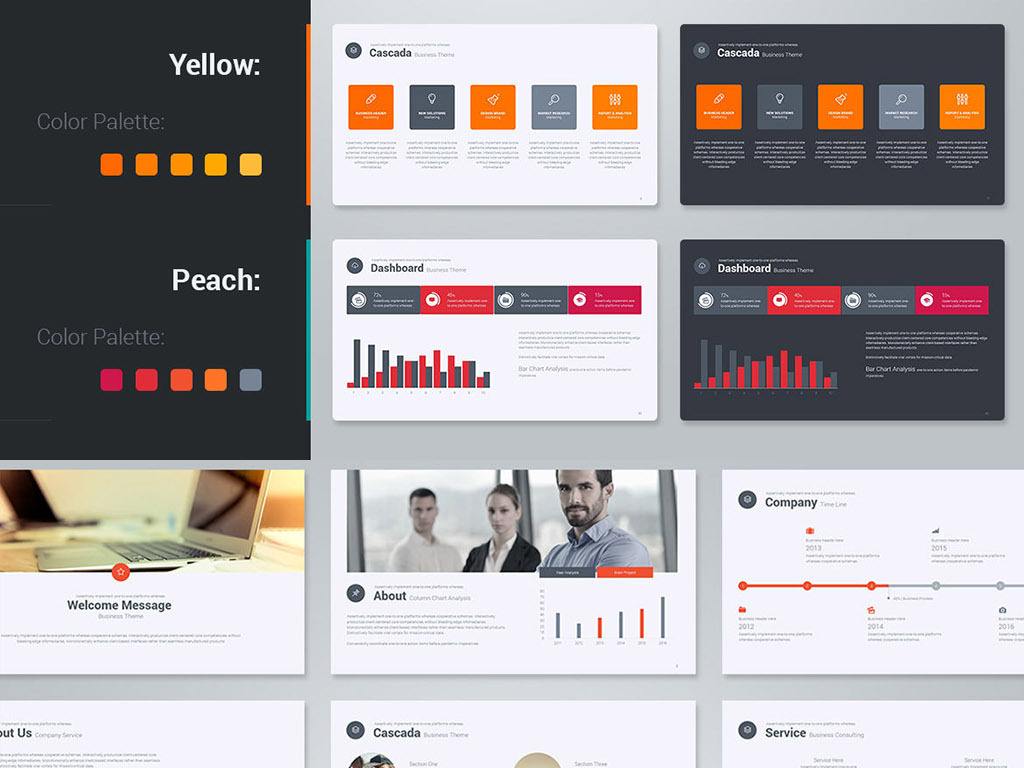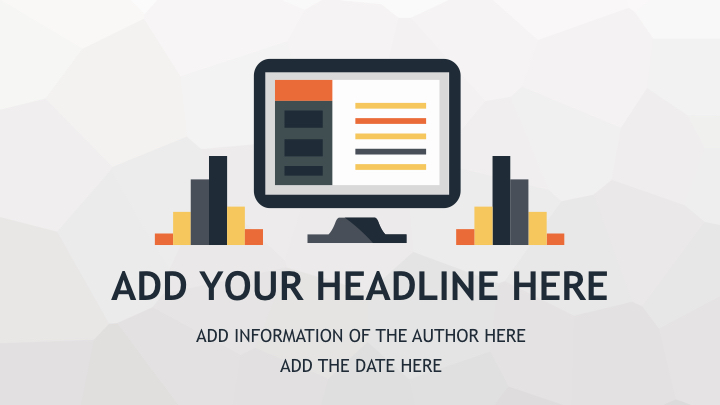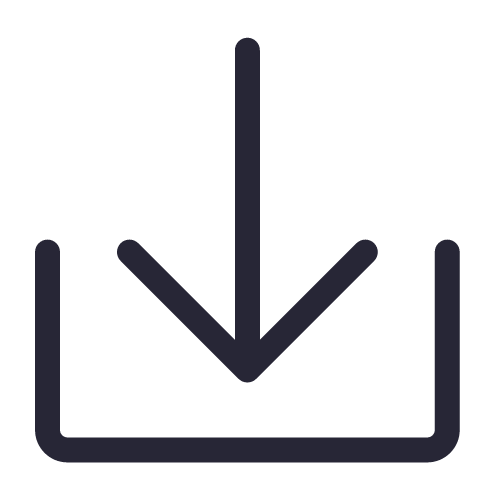Global labor trends show that millions and millions of people every year are unemployed, and should they seek jobs, they would face rigorous screening processes. This is due to changes in the operations, structures, and spending of many companies caused by unpredictable economic circumstances and technological developments replacing a huge part of the human force. Adding to the worry of any job applicant is the tight competition with other job seekers.
One crucial way to beat those odds is to stand out. To be noticed in a crowd of names and faces is to make your first impression unforgettable, and this first impression is in the form of a piece of paper which celebrates the history of your milestones and feats: your resume.

The Six-second Look: Why Does A Resume Need to be Catchy and Effective?
A study by TheLadders, a job-matching service and employment site in New York, reveals how recruiters actually look into piles of curriculum vitae (CV) and resume. These are the company’s findings:
“…recruiters spend about 6 seconds before they make the initial “fit/no fit” decision. That means prioritizing information is essential.”
“…recruiters tend to follow a consistent visual path when reviewing both resumes and online profiles, so an organized layout is crucial.”
“…professionally written resumes have a clear visual hierarchy and present relevant information where recruiters expect it, these documents quickly guide recruiters to a yes/no decision.”
Hence, a well-polished resume with enough information that matches the specific job requirements is likely to get noticed.

Today, this guide will take you to the nitty-gritty of writing an effective resume. This is not a magic wand that will transport you to the office of your dream job, but this will detail the essentials that will help refine your first impression to your potential employer and possibly your confidence to share what you have been achieving all along:
The difference between a resume and a CV
The CV
The Resume
Types of Resume
Different Parts of a Resume
Tips on Writing a Resume
The Difference Between A Resume and A CV
A resume is a formal document that showcases the basic yet crucial information about a person’s education and professional experience. These details are expected to be relevant to the requirements of a particular position one is applying for. According to The Bates College in Maine, a resume is typically for job seekers in the field of business, industry, governmental, and non-profit jobs. Its purpose is to help you land an interview.
On the other hand, the San Francisco State University stresses that a CV is longer and more detailed. In fact, a Ph.D. student may come up with a two-to-three page CV while those with extensive professional experience might produce seven to eight pages. Moreover, a CV is often for graduate school and academic positions, such as faculty positions, internships and even grant, scholarship, and fellowship applications. Also, there are professionals sending CVs to companies abroad since they have no idea what Human Resources are looking for in such documents yet.
The CV
In essence, a CV can be compared to a huge database of a person’s achievements. The University of North Carolina-Chapel Hill shares that a standard CV has the following elements:
Name / Contact Information: your contact information or contact information of your current office or place of employment (unless your job application is not confidential)
Areas of Interest: different fields, expertise, or academic interests
Education: a detailed list of degrees earned or in progress, institutions, and years of graduation. The titles of dissertation or thesis can be placed under this category.
Grants, Honors and Awards: grants received, honors for previous work, or awards given for teaching service.
Publications and Presentations: published manuscripts, articles, abstracts, technical papers, and books and presentations given at conventions and conferences. This category can be split into two depending on the length of the information.
Employment and Experience: lists of teaching experiences, laboratory/ field/volunteer work, leadership roles, or other relevant experiences.
Scholarly or Professional Memberships: professional organizations of which you are a member or officer
References: persons who can recommend you and properly describe your work attitude and competence, with their position, institution and contact information.
Others are Professional Certification (certification, licensure, endorsements, and special training), Academic Service (advising, university involvement, outreach, and university assignments) and Professional Activities (conference participation, conference presentation, invited lectures, and conference leadership).
You may check these links for sample CVs:
Johns Hopkins University Career Center
Duke University Center
Yale School of Medicine – Yale University
The Resume
Meanwhile, the resume is for those who have just begun or approaching the middle of the journey of their career.
According to the Cal Alumni Association of the University of Califoria-Berkeley, a resume is a summary that is meant for a specific job. It is a nest of the highlights of one’s career and education that mirror what a specific role is looking for. Hence, it has to be crisp yet substantial enough for your potential employer or recruiter. You have to advertise, in a professional way, your achievement, skills, and experience to an institution that is looking for the kind of talent you have and help you grow what you currently have.
Because of varying jobs, role expectations, requirements, culture, and nature of work, not all resumes are the same.
Types of Resume
There are three types of resume according to Wilma Fellman, author of Finding A Career that Works for You, as seen on myadhd.com:
1) Chronological Resume. This type of resume displays work experiences in reverse chronological order (most recent to least recent) and itemizes the duties of each job “rather than the specific abilities, skills, and accomplishments you possess to perform the job well.
Advantages
Highlights a record of steady employment
Expected by many employers
Easiest to prepare
Highlights companies you have worked for that have a good reputation
Disadvantages
Often does not focus on skills
Emphasizes job hopping
Emphasizes large gaps in your work history”
2) Functional Resume. This details one’s skills and achievements as opposed to dates, positions, and duties that can be seen in a chronological type of resume. If the previous category focuses on the past milestones, a functional resume highlights what one can do for the potential employer. This is actually ideal for those who do not have enough work experience yet or have large gaps in their employment background. But this requires extensive examination of one’s skills that can benefit the prospective company.
Advantages
Emphasizes skills and accomplishments
De-emphasizes spotty job history or frequent job changes
Focuses on what you can do (future) rather than on only what you have done (pas
Disadvantages
Is not familiar to employers, who may feel something is missing
Provides no opportunity to highlight certain employers
Offers no clear work history”
Check a sample functional resume here.
3) Combination Resume. Fellman believes that this type of resume is a bit difficult to write, especially that it combines both the characteristics of the chronological resume and functional resume. Essentially, this type of document covers a brief employment history presented chronologically, and identifies skills and competencies, such as job titles and dates.
Advantages
Provides what employers are used to seeing—a work history as well as skills and accomplishments.
Provides employers with dates in your work history so they can determine how long you have stayed at different jobs, and if there have been any significant gaps in employment.
Disadvantages
A little more difficult to prepare.
Here are other links containing comprehensive examples of resume:
The Triton Career Guide – University of California, San Diego.
University of Pittsburgh Johnstown
California State University
The Different Parts of A Resume
1) The Heading. This comprises the personal information that are pertinent to your job application. This includes:
Full name (it should stand out from the rest of the paper)
Permanent/temporary address
A professional email address
Website URL (if it contains professional information or showcases your portfolio
2) Objective Statement / Summary. This briefly announces the kind of work you want to pursue, the type of company you want to work for, and why you can perform it well (relevant skills, knowledge, or experience). Often, the more specific your objective is, the more realistic and convincing it would sound.
Take a look at this example from UCSD:
GINA GLOBAL
9500 Gilman Drive /San Diego, CA 92093 / (858) 534-3750 / student@ucsd.edu
Objective
To obtain an International Trade Coordinator position with the World Trade Center, San Diego using
organizational ability, knowledge of foreign cultures, languages and research skills
3) Education. This is a crucial part especially for new graduates and those who are just starting their career. According to the Geneva College in Pennsylvania, this section should contain:
Your current college
Date of expected completion
Other institutions you’ve attended
The degree (Associate, Bachelor, Master)
Your major
Minors or concentrations, if you have them
GPA if higher than 3.0
Other categories that may be relevant are: major courses you’ve taken; research presentations; large projects or papers; simulations.
4) Skills and Qualifications. These should be marketable and fitting to the job requirements one is applying for. One should list relevant skills, such as those in computer operations, language proficiency, interpersonal communication, work attitude, and others that appear beneficial to the desired company or role.
Example (Global’s resume):
Skills & Qualifications
Excellent oral and written communication skills
Fluent in spoken and written Spanish
Extensive international travel, including, France, Spain, Germany and Mexico
Broad background and knowledge of world affairs and cultures
Ability to respond quickly to changing circumstances
Proficient in Word, Excel, PowerPoint, internet and email
5) Experience. This segment serves as a proof of one’s capability to handle a similar job or to expand skills according to the needs or requirement of the position. This also showcases one’s adeptness and practical knowledge of the field. Among the details to write here are part- and full-time work, paid and unpaid internships, volunteer positions, and leadership positions. According to the Purdue University, each item should be presented with the following:
Name and address of company or organization
Employment dates
Position title
Responsibilities (remember to list the number of employees you supervised if you have management experience)
Awards and promotions (employers are very interested in your achievements and success. Awards and promotions show an employer that you have been recognized for your hard work)
Check Global’s Experience section:
President, UCSD International Affairs Group, San Diego, CA (9/20xx – present)
Organize monthly speaker series increasing student awareness of international affairs topics
Coordinate community service and social activities leading to strong membership retention
Recruit employers to speak at events resulting in networking opportunities for students
Communicate with more than 20 members via weekly e-mails and timely website updates
Discussion Leader, Language Conversation Tables, Mexico City, Mexico (7/20xx – 6/20xx)
Facilitated table discussions with diverse international student group on a weekly basis
Interacted with residents, heightening understanding and appreciation of other cultures
Participated in local community visits to discuss U.S.-Mexico cultural connections
Server, Chili’s Restaurant, National City, CA (4/20xx – 11/20xx)
Communicated with a variety of customers on menu orders, sometimes speaking in Spanish
Served more than 75 customers per shift using multi-tasking and teamwork skills with staff
6) Honors / Awards / Activities. This part would add credibility to the applicant as it displays one’s awards, recognition, honor (dean’s list, leadership awards, certifications, or positions in an organization). See this other example from USCD:
HONORS/ACTIVITIES
TESC
Representative, Society of Women Engineers at UCSD, July 20xx-Present
Active Member, Tau Beta Pi, National Engineering Honor Society, Sept 20xx – Present
Provost’s Honors, Fall xx, Spring xx, Spring xx
Excellence Award in Writing – JEO National Journalism Convention, June 20xx
7) References. This category shows a list of people that recruiters or employers can contact to gain more insights about you as an applicant. The Geneva College specifies what employers should see in this section:
Title the page References and center it between the left and right margins. Then provide entries for each person, including their:
Name (include Dr. if it applies, or Mr./Ms. if their gender is not obvious)
Job title
Place of employment
Address
Email address
Phone number
Tips on Writing A Resume
On physical paper
A plain white paper, according to the University of Pittsburgh Johnstown (UPJ), remains to be “the most businesslike.” However, colored paper can be acceptable depending on the nature of work. Award-winning resume expert Laura Smith-Proulx shares in her article that there are resume color rules, such as using a particular color to highlight a part of a resume. In a Forbes article, experts recommend clear and neat resumes but applicants who are eyeing a position in creative fields such as digital strategy can use their resume to “shine” but they need to keep the information substantial.
On formatting
UPJ explains that among the layout elements that applicants must consider when writing a resume are: dividing lines, white space, good spacing, headings, and margins. “By being “eye catching”, your resume may separate itself from others.” UPJ also stresses that there is no perfect way to organize a resume, but all resumes have things in common: no spelling, punctuation, or grammatical errors. You can practice the formatting using the resume worksheets of the Maine Community College System here.
On word choice
An article from The New York Times shares studies proving that words affect the brain, particularly the sensory cortex. Hence, it is important to note that the use of brief yet powerful words make the job descriptions, skills and experience more unforgettable and affecting. Here are helpful links containing words you can use for your resume:
List of Action Verbs for Different Types of Skills
Marketable Job Skills
The Most Powerful Words to Use on Your Resume
On writing the resume
Here are guiding principles on writing a resume that you can keep in mind as you gather details, develop its structure, and style it according to your desired job, company, or field:
Conduct some research about your industry, company, or prospective employers. Know their mission-vision, culture, achievements, objectives, operations, structure, and external relations. This set of data will give you a clue about the credentials you will prioritize in your resume.
Be more specific with your achievements. Instead of saying “managed inventory books,” write “computed and recorded inventory valuation on a monthly basis.” This way, your future boss, who may be too busy to clarify details like this, can assess your qualifications easily.
Keep on updating your resume. It is a record of your milestones, your favorite history. This may also mean going beyond the paper: being updated with the trends of your industry, connecting with people and organizations in your field, and attending conventions and seminars. This way, you can be sure that what you put in paper is keeping up with the changes.
Be honest. The resume can only help you get a foot in the door of your dream job, because the words, numbers, and details you put there should speak louder in person as you face the interview, perform the job, and work with your boss and the people around you.

